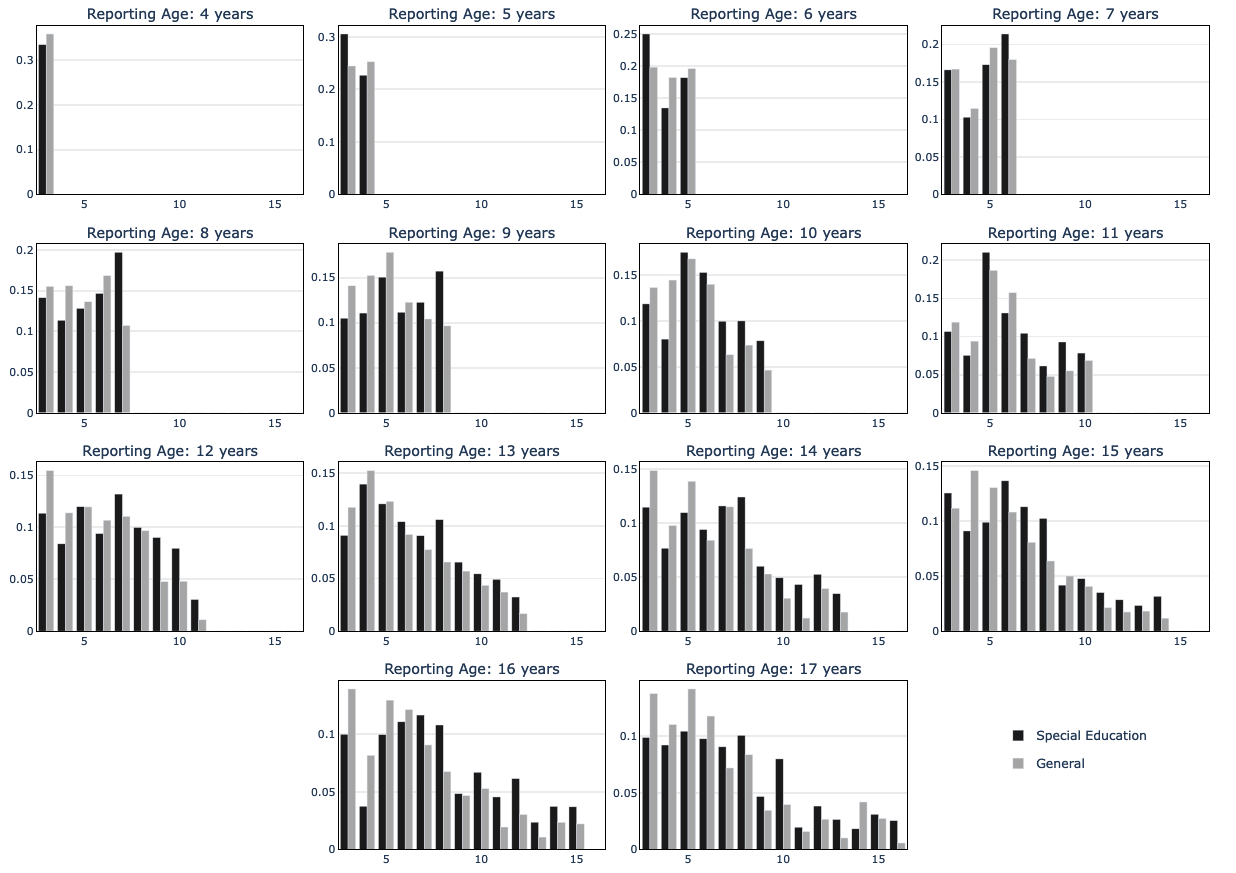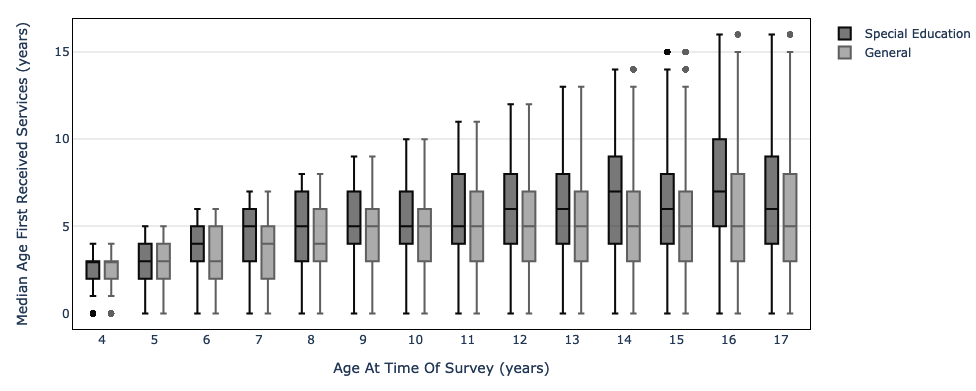Developmental and Behavioral Pediatrics: Screening & Assessment
Developmental and Behavioral Pediatrics 3
409 - Service Initiation For Developmental Disabilities Declines With Age In A Nationally Representative Sample
Publication Number: 409.206

Benjamin J. Schindel, MD, MPH (he/him/his)
Fellow, Neurology and Developmental Medicine
Kennedy Krieger Institute
Baltimore, Maryland, United States
Presenting Author(s)
Background: Developmental disabilities (DD) do not emerge solely in very young children: symptoms of specific learning disorders, ADHD, and mild intellectual disability may not reach clinical detection thresholds until well into adolescence. However, the incidence of DD in adolescents is unknown. Given a lack of nationally representative epidemiological data for DD identification in adolescents, a surrogate could include measurements of the numbers of children and adolescents receiving services such as special education or speech, occupational, or behavioral therapy, as well as the ages of service initiation. Variation of service initiation by age could identify critical periods of under-identification that may inform future developmental surveillance and screening practices. To our knowledge, this is the first study to attempt to describe incidence of DD in adolescents.
Objective:
We aimed to infer rates of developmental surveillance/screening by analyzing the ages at which children and adolescents initiated service utilization using a nationally representative data sample.
Design/Methods:
This cross-sectional study uses data from the National Survey of Children’s Health (NSCH), which provides nationally representative data and is conducted annually by the US Census Bureau. We restricted the study population age range to 3-17 years old in order to identify children who might be receiving both school- and community-based services. Data are gathered from 2016-2019 survey results and weighted according to NSCH guidelines. It is unclear why there are relatively fewer services initiated in adolescence: although most services are granted in early childhood, the prevalence of developmental disabilities in the US and the decline in new service initiation after 10 years suggests that at least some of our findings could be explained by lack of identification and subsequent diagnosis. This may present an avenue for future investigation of DD identification in adolescents, including pediatricians’ surveillance/screening practices, barriers to these practices, and opportunities to advocate for and advise patients and parents.
Results: Our total sample size is 114,476 unique individuals. For subjects 10-17 years old at the time of survey completion, new services had been initiated at a median age of 5 years and special education at about 6-7 years. Histograms partitioned by age demonstrate a significant drop-off in all new services initiated after 10 years old, with a small increase in new services at 14-15 years.
Conclusion(s): 


